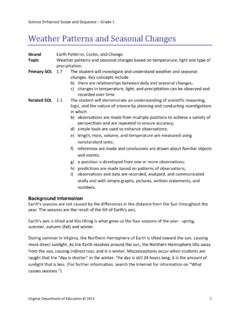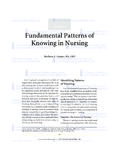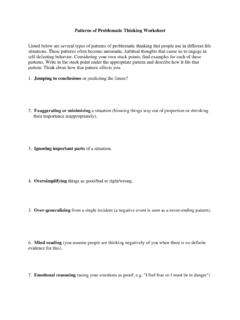Transcription of LVDS Signal Quality: Jitter Measurements Using …
1 DS90C031,DS90C032. lvds Signal quality : Jitter Measurements Using Eye patterns Test Report #1. Literature Number: SNLA166. lvds Signal quality : Jitter Measurements Using Eye patterns Test Report #1. National Semiconductor lvds Signal quality : Jitter Application Note 977. John Goldie Measurements Using Eye Syed Huq patterns Test Report #1 October 1994. lvds Signal quality When line drivers (generators) are supplying symmetrical This report provides data rate versus cable length recom- signals to clock leads, the period of the clock, rather than the mendations for lvds drivers and receivers in a typical appli- unit interval of the clock waveform, should be used to deter- cation for a particular twisted pair cable. The questions of: mine the maximum cable lengths ( , though the clock rate How Far? and How Fast? seem simple to answer at first, but is twice the data rate, the same maximum cable length limits after detailed study their answers become quite complex.)
2 Apply). This is due to the fact that a periodic waveform is not This is not a simple device parameter specification. But prone to distortion from inter symbol distortion as is a data rather, a system level question, and to be answered correctly line. a number of other parameters besides the switching charac- teristics of the drivers and receivers must be known. This in- cludes the measurement criteria for Signal quality that has been selected, and also the pulse coding that will be used (NRZ for example). Additionally, other system level compo- nents should be known too. This includes details about the cable, connector, and information about the printed circuit board (PCB). Since the purpose is to measuring Signal qual- ity, it should be done in a test fixture that matches the end environment as close as possible, or even better in the ac- tual application if possible. Eye pattern Measurements may be used to measure the amount of Jitter versus the unit inter- nal to establish the data rate versus cable length curves and therefore are a very accurate way to measure the expected Signal quality in the end application.
3 This test report as- sumes: maximum Jitter allotment of 20%, Measurements taken at 0V (differential zero) for minimum Jitter , measure- ments taken at 100 mV for maximum Jitter , and then pro- vides the corresponding data rate versus cable length rec- ommendations. WHY EYE patterns ? The eye pattern is used to measure the effects of inter sym- bol interference on random data being transmitted through a particular media. The transition time of the Signal is effected by the prior data bits, this is especially true for NRZ data AN012338-1. which does not guarantee transitions on the line. For ex- FIGURE 1. Formation of an Eye Pattern by ample in NRZ coding, a transition high after a long series of Superposition lows has a slower rise time than the rise time of a periodic (010101) waveform. This is due to the low pass filter effects Figure 2 describes the measurement locations for minimum that the cable causes.
4 Figure 1 illustrates the superposition Jitter . Peak-to-Peak Jitter is the width of the Signal crossing of six different data patterns . Overlaid they form the eye pat- the optimal receiver thresholds. For a differential receiver, tern that is the input to the cable. The right hand side of Fig- that would correspond to 0V (differential). However, the re- ure 1, illustrates the same pattern at the end of the cable. ceiver is specified to switch between 100 mV and +100 mV. Note the rounding of the formerly sharp transitions. The Therefore for a worse case Jitter measurement , a box should width of the crossing point is now wider, and the opening of be drawn between 100 mV and Jitter measured between the eye is also now smaller (see AN-808 for an extensive dis- cussion on eye patterns ). AN-977. 1998 National Semiconductor Corporation AN012338 the first and last crossing at 100 mV. If the vertical axis Cable: Cable used for this testing was Berk-Tek part number units in Figure 2 was 100 mV/division, the worse case Jitter 271211.
5 This is a 105 (Differential Mode) 28 AWG stranded 100 mV levels. twisted pair cable (25 Pair with overall shield) commonly used on SCSI applications. This cable represents a common data interface cable. For this test report the following cable lengths were tested: 1, 2, 3, 5, and 10 meter(s). Cables longer than 10 meters were not tested, but may be employed at lower data rates. PCB#2: DS90C032 lvds Quad Receiver soldered to the PCB with matched PCB traces between the device (located near the edge of the PCB) to the connector. The connector is an AMP amplite 50 series connector. A 100 surface mount resistor was used to terminate the cable at the receiver input pins. TEST PROCEDURE. A pseudo-random (PRBS) generator was connected to the driver input, and the resulting eye pattern, measured differ- AN012338-2 entially at TP' was observed on the oscilloscope. Different FIGURE 2. NRZ Data Eye Pattern cable lengths (L) were tested, and the frequency of the input Signal was increased until the measured Jitter equaled 20%.
6 EYE PATTERN TEST CIRCUIT with respect to the unit interval for the particular cable length. lvds drivers and receivers are intended to be primarily used The coding scheme used was NRZ. Jitter was measured in an uncomplicated point-to-point configuration as is shown twice at two different voltage points. First, Jitter was mea- in Figure 3. This figure details the test circuit that was used sured at the 0V differential voltage (optimal receiver thresh- to acquire the Eye pattern Measurements . It includes the fol- old point) for minimum Jitter , and second at the maximum re- lowing components: ceiver threshold points ( 100 mV) to obtain the worst case PCB#1: DS90C031 lvds Quad Driver soldered to the PCB or maximum Jitter at the receiver thresholds. Occasionally jit- with matched PCB traces between the device (located near ter is measured at the crossing point alone, this will result in the edge of the PCB) to the connector.
7 The connector is an a much lower Jitter point, but ignores the fact that the receiv- AMP amplite 50 series connector. ers may not switch at that very point. For this reason this sig- nal quality test report measured Jitter at both points. AN012338-3. FIGURE 3. lvds Signal quality Test Circuit 2. RESULTS AND DATA POINTS ent cable, a different wire gauge (AWG), etc., will create a different relationship between maximum data rate versus cable length. 20% Jitter Table @ 0V Differential (Minimum Jitter ). Cable Data Unit Interval - Jitter - Length Rate tui tcs (meter) (Mbps) (ns) (ns). 1 400 2 391 3 370 5 295 10 180 As described above, Jitter was measured at the zero volt dif- ferential point. For the case with the 1 meter cable, 490 ps of Jitter at 400 Mbps was measured, and ns of Jitter at 180. AN012338-4. Mbps and with the 10 meter cable. FIGURE 4. Data Rate versus Cable Length 20% Jitter Table @ 100 mV CONCLUSIONS.
8 (Maximum Jitter ) Eye patterns provide a useful tool to analyze Jitter and thus the resulting Signal quality as it captures the effects of a ran- Cable Data Unit Interval - Jitter - dom data pattern. They provide a method to determine the Length Rate tui tcs maximum cable length for a given data rate or vice versa. However, different systems can tolerate different amounts of (meter) (Mbps) (ns) (ns). Jitter , commonly 5%, 10%, or 20% is selected, with 20% be- 1 200 ing the maximum allowed. Jitter in the system that is greater 2 190 than 20% tends to close down the eye opening, and error 3 170 free recovery of NRZ data is increasing more difficult. This report illustrates typical maximum cable lengths for a com- 5 mon data interface cable at 20% Jitter , for data rates between 10 100 100 Mbps and 200 Mbps. Selecting a premium cable, a cat- The second case measured Jitter between 100 mV levels.
9 Egory 5 cable for example, will extend the curve significantly. For the 1 meter cable, 1 ns of Jitter was measured at While selecting a lower limit for Jitter , 5% for example will de- 200 Mbps, and for the 10 meter cable, 2 ns of Jitter occurred crease the maximum cable length. at 100 Mbps. REFERENCES. Figure 4 is the graphical representation of the relationship between data rate and cable length for the application under To probe further the following National Semiconductor Appli- test. Both curves assume a maximum allotment of 20% Jitter cation Notes are recommended which are all located in the with respect to the unit interval. Basically data rates between INTERFACE: Data Transmission Databook: 200 400 Mbps are possible on the shorter lengths, and data AN-808 Long Transmission Lines and Data Signal quality rates of 100 200 Mbps are possible at 10 meters. It should AN-903 A Comparison of Differential Termination Tech- be noted that employing a different coding scheme, a differ- niques AN-916 A Practical Guide to Cable Selection For additional information on cables contact: Berk-Tek 1-800-237-5835 (USA), 1-717-354-6200.
10 3 lvds Signal quality : Jitter Measurements Using Eye patterns Test Report #1. LIFE SUPPORT POLICY. NATIONAL'S PRODUCTS ARE NOT AUTHORIZED FOR USE AS CRITICAL COMPONENTS IN LIFE SUPPORT DE- VICES OR SYSTEMS WITHOUT THE EXPRESS WRITTEN APPROVAL OF THE PRESIDENT OF NATIONAL SEMI- CONDUCTOR CORPORATION. As used herein: 1. Life support devices or systems are devices or sys- 2. A critical component in any component of a life support tems which, (a) are intended for surgical implant into device or system whose failure to perform can be rea- the body, or (b) support or sustain life, and whose fail- sonably expected to cause the failure of the life support ure to perform when properly used in accordance device or system, or to affect its safety or effectiveness. with instructions for use provided in the labeling, can be reasonably expected to result in a significant injury to the user.


















